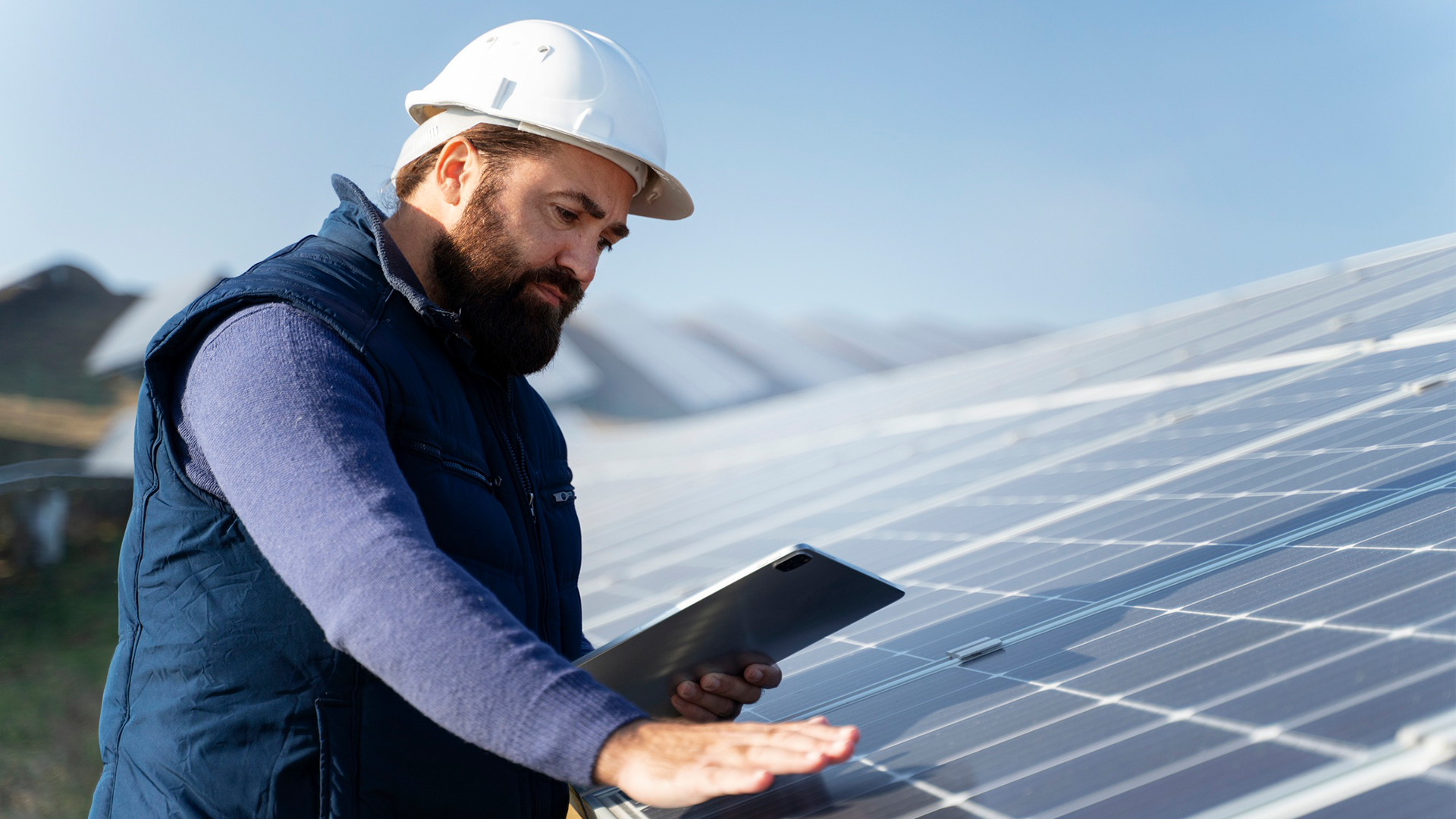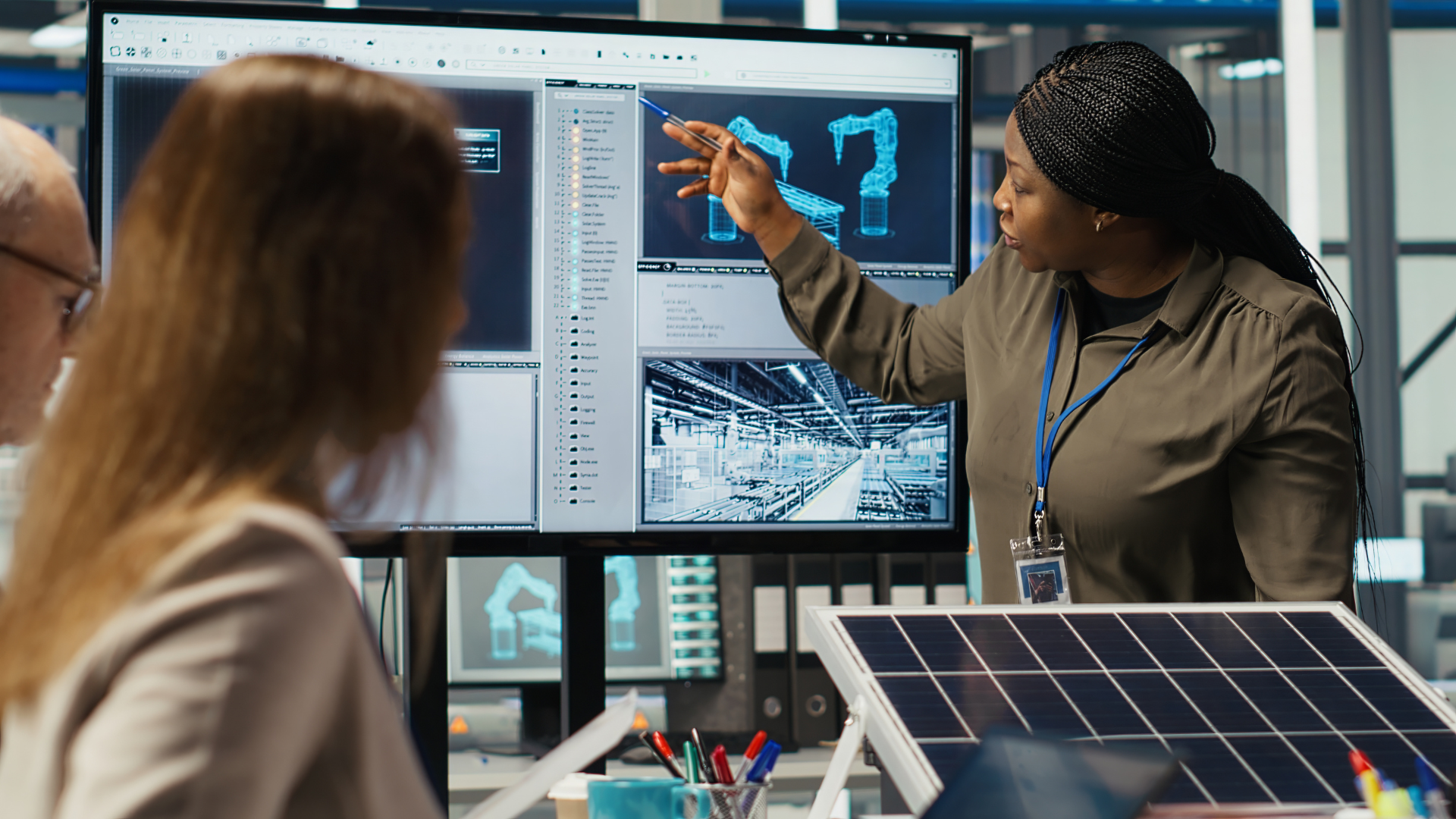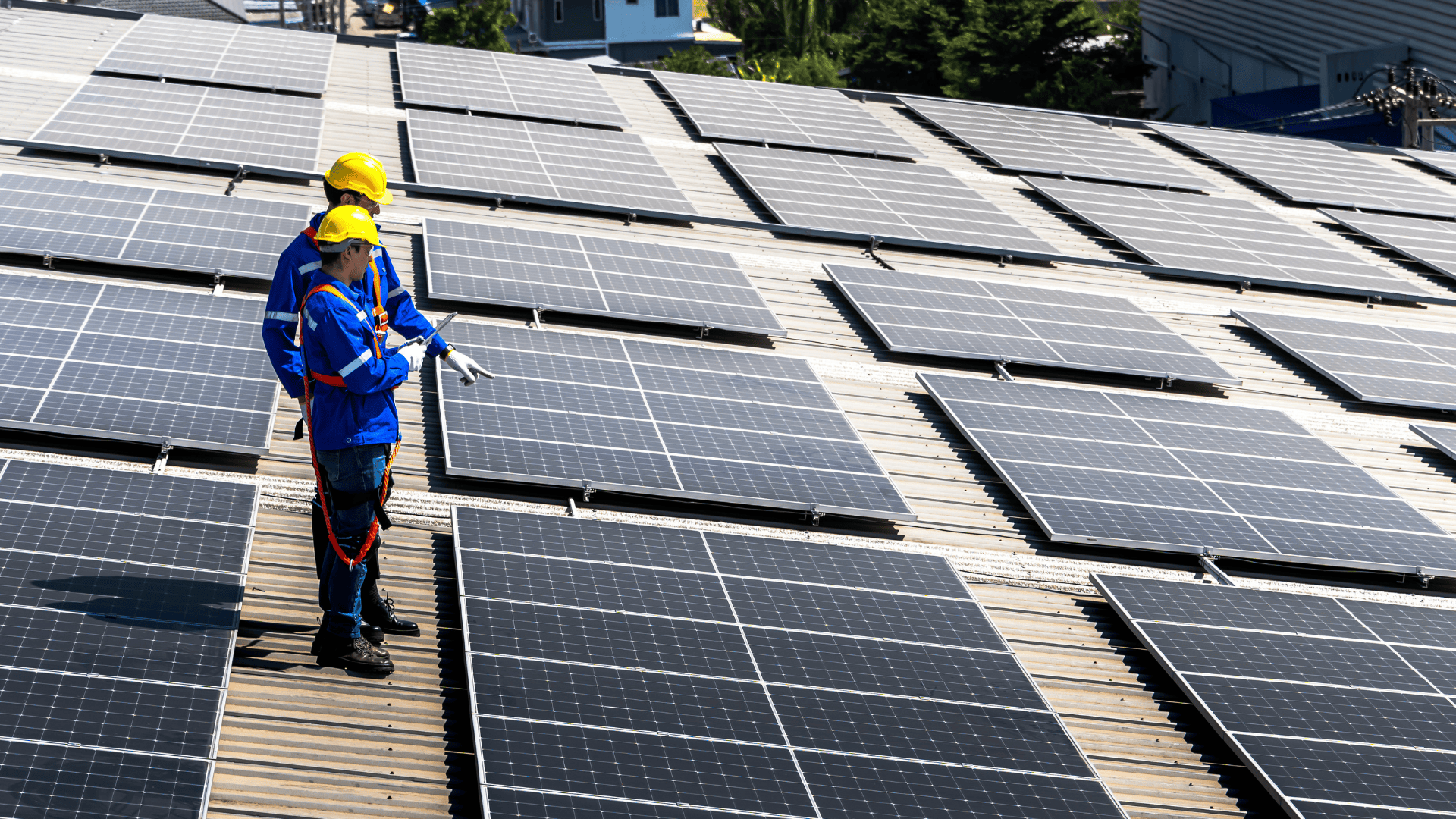June 27, 2024
In an era where renewable energy is not just a trend but a necessity, solar panels have emerged as a leading solution for sustainable power generation. Solar panel placement matters because it affects the amount of solar radiation the panels can collect and, consequently, the energy production.
However, to truly capitalize on the benefits of solar energy, proper placement of solar panels is crucial. This guide will provide you with comprehensive insights into optimizing solar panel placement, ensuring that you can achieve peak performance and maximum efficiency from your solar power system.
Understanding Solar Panel Placement
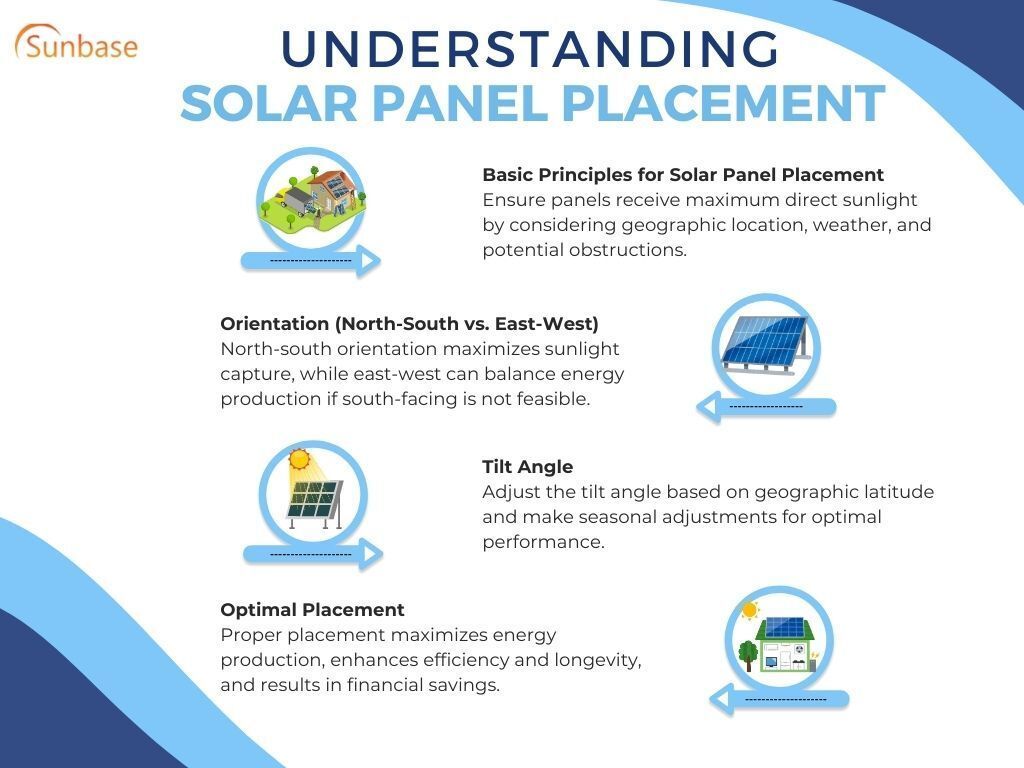
Maximizing the efficiency of your solar power system hinges on the strategic placement of your solar panels. Understanding and applying basic principles of solar panel placement can significantly enhance solar panel efficiency and the amount of electricity your system generates.
When installing solar panels, consider factors such as roof tilt, and the various surfaces where panels can be installed, including roofs, walls, and the ground, and hiring a professional solar panel installer. Each option has its benefits and drawbacks.
Here are the key aspects to consider:
Basic principles of solar panel placement
The primary goal of solar panel placement is to ensure that your panels receive as much direct sunlight and solar radiation as possible throughout the day and across different seasons. This involves considering the geographic location, local weather patterns, and any potential obstructions that might cast shadows on your panels.
Solar panel orientation is crucial for maximizing solar energy efficiency. Proper orientation and placement can significantly boost solar energy production.
The best solar panel orientation, whether facing north, south, east, or west depends on the hemisphere. It is affected by the exposure time to the sun and thus the electricity output of the panels is also affected.
Optimal placement takes advantage of the sun’s trajectory and maximizes exposure to sunlight, thereby producing more energy yield.
Orientation (north-south vs. east-west)
North-South Orientation: This direction for solar panels captures the maximum amount of sunlight throughout the day, particularly during peak sunlight hours.
The direction of solar panels is crucial for maximizing sunlight exposure and solar panel performance. In the Northern Hemisphere, panels should face south, while in the Southern Hemisphere, they should face north.
Additionally, west-facing panels can better match peak electricity demand in the evenings and reduce reliance on the grid during peak hours.
The correct solar panel direction can significantly enhance solar panel performance. Conversely, in the Southern Hemisphere, the best direction for solar panels is true north.
East-West Orientation: While south-facing panels are ideal, there are situations where an east-west orientation may be more practical. This arrangement can be beneficial if your roof structure or landscape restricts a south-facing setup.
East-west-oriented panels can still capture significant sunlight, especially in the mornings and afternoons, and may help balance energy production throughout the day.
Tilt angle
The tilt angle of solar panels is another critical factor that affects their performance. The ideal tilt angle, or optimum solar panel angle, depends on your geographic latitude:
Regular solar panel angle adjustment can optimize energy production throughout the year.
Latitude-Based Tilt: A general rule of thumb is to set the tilt angle equal to your latitude. For instance, if you are at 30° latitude, the panels should be tilted at 30°.
The importance of solar panel angles in maximizing solar energy production cannot be overstated. It should be adjusted based on latitude and seasons to ensure efficient energy generation.
Seasonal Adjustments: To optimize performance further, adjust the tilt angle seasonally. Increase the tilt angle by about 15° in winter to capture more sunlight when the sun is lower in the sky, and decrease it by 15° in summer when the sun is higher.
Also learn about, How Many Solar Panels Are Needed To Power A House
Importance of optimal placement
Why does solar panel placement matter? Optimal placement of solar panels is vital for several reasons:
Maximized Energy Production: Correct orientation and tilt can significantly boost the solar panel output and the amount of electricity generated by your solar panels, ensuring you get the most out of your investment.
Efficiency and Longevity: Proper placement reduces the strain on your solar system, improving its overall efficiency and extending the lifespan of your panels. Proper placement improves solar panel system efficiency and extends the lifespan of your panels.
Financial Savings: Increased energy production translates to higher savings on your electricity bills, and potentially greater returns on any surplus energy fed back into the grid.
Factors to consider for the best solar panel installation
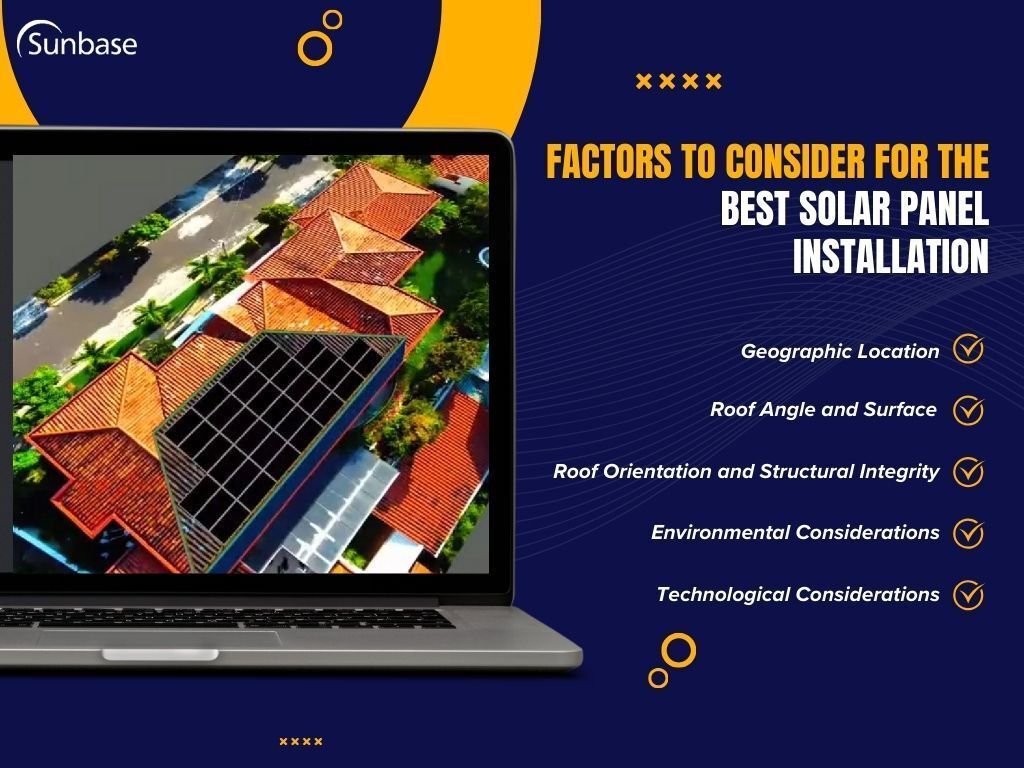
Optimizing the placement of solar panels involves careful consideration of various factors that influence their efficiency and effectiveness.
Developing a comprehensive solar panel placement strategy can ensure optimal performance and efficiency. Different solar panel systems, such as ground-mounted and roof-mounted, have their benefits and drawbacks.
Ground-mounted solar panel systems, for example, can be more efficient and easier to maintain but require more space. You can ensure the best possible performance for your solar power system by taking geographic location, roof characteristics, environmental conditions, and technological advancements into account.
1. Geographic location
Latitude and its impact on panel orientation and tilt
The latitude of your location plays a critical role in determining the optimal orientation and tilt angle for your solar panels:
Optimizing solar panel orientation based on latitude can maximize sunlight exposure and energy production.
Orientation: As previously mentioned, panels should generally face true south in the Northern Hemisphere and true north in the Southern Hemisphere to maximize sunlight exposure.
Tilt Angle: The ideal solar panel tilt angle is often equal to the latitude of your location. Adjustments can be made seasonally to optimize performance further, such as increasing the tilt angle in winter and decreasing it in summer to account for the sun’s varying position in the sky.
2. Roof angle and surface
Ideal tilt angles for different locations
Low-Latitude Regions: In regions closer to the equator, a flatter tilt angle (close to horizontal) is more effective, as the sun is higher in the sky throughout the year.
Optimizing the tilt angle based on your location can enhance energy production and efficiency.
High-Latitude Regions: In regions further from the equator, a steeper tilt angle is beneficial to capture more sunlight during the shorter winter days.
Roof material and its suitability
The type of roof material can affect the installation process and the durability of your solar panel system:
Different roof materials may require specific solar panel mounting systems to ensure secure and efficient installation.
Asphalt Shingles: Common and generally suitable for solar panel installation.
Metal Roofs: Durable and long-lasting, often ideal for mounting solar panels.
Tile Roofs: Require special mounting hardware and careful installation to avoid damage.
3. Roof orientation and structural integrity
South-facing roofs vs. other orientations
While south-facing roofs are optimal, east- and west-facing roofs can also be effective, especially with modern solar technology that can adjust to different light conditions. Adhering to solar panel orientation guidelines can maximize sunlight exposure and energy production. The choice depends on:
Available Roof Space: The amount of space available on each side of the roof.
Energy Needs: Balancing energy production throughout the day if peak usage occurs in the morning or evening.
Ensuring the roof can support the weight of the panels
Before installation, it’s crucial to assess the structural integrity of the roof:
Understanding solar panel weight considerations is crucial for ensuring the structural integrity of your roof.
Load-Bearing Capacity: Ensure the roof can handle the weight of the solar panels and mounting hardware.
Professional Assessment: A structural engineer or roofing professional can evaluate the roof’s condition and recommend any necessary reinforcements.
4. Environmental considerations
Local climate conditions (snow, rain, wind)
Snow: Heavy snowfall can cover panels, reducing efficiency. A steeper tilt angle can help snow slide off more easily.
Regular solar panel maintenance is essential to ensure optimal performance in varying climate conditions.
Rain: Generally beneficial as it can clean the panels, but proper drainage must be ensured to avoid water damage.
Wind: Panels must be securely mounted to withstand high winds, especially in hurricane-prone areas.
Proximity to potential shading objects
Trees and Buildings: Nearby objects that cast shadows can significantly reduce solar panel efficiency. Consider trimming trees or selecting a location with minimal shading. Conducting a solar panel shading analysis can help identify and mitigate potential shading issues.
Seasonal Changes: Account for changes in shading throughout the year as trees grow and the sun’s path changes.
5. Technological considerations
Types of solar panels (monocrystalline vs. polycrystalline vs. thin-film)
Monocrystalline: High efficiency and space-efficient, ideal for areas with limited space.
Comparing the efficiency of different types of solar panels can help you choose the best option for your needs.
Polycrystalline: Lower cost but slightly less efficient than monocrystalline.
Thin-Film: Flexible and lightweight, suitable for unconventional spaces, but generally less efficient.
Innovations in solar panel technology (bifacial panels, micro-inverters)
Bifacial Panels: Capture sunlight from both sides, increasing efficiency when installed over reflective surfaces.
Innovations like bifacial panels and micro-inverters contribute to solar panel performance optimization.
Micro-Inverters: Optimize the performance of individual panels, enhancing overall system efficiency and reducing the impact of shading on a single panel.
Want to know if Solar Panels Work in the Shade? Click here.
Wrapping Up
Transitioning to solar energy is not only a smart financial investment but also a significant step towards a sustainable future. In this process optimizing the placement of your solar panels is a vital step in maximizing the efficiency and performance of your solar power system.
If you meticulously plan the placement of your solar panels, it can help you maximize energy production, reduce your carbon footprint, and achieve greater energy independence.
About Us- Sunbase
If you have a solar business that needs to optimize operations, join us for a quick demo of the Sunbase software!
Sunbase software saves companies time & money by reducing technology costs, and consolidating lots of programs into one single tool while getting everything to work together effectively. If you have any doubts about our software, please get in touch with us!
FAQs
Q1 . How do I determine the best tilt angle for my solar panels?
Ans. The best tilt angle is typically equal to your geographic latitude. For more precise optimization, consider adjustable mounts that allow you to change the angle seasonally. Using tools or consulting with professionals can help with accurate solar panel angle calculation.
Q2. Can I install solar panels on a flat roof?
Ans. Yes, solar panels can be installed on flat roofs using mounting systems that tilt the panels to the optimal angle for your location. Various solar panel mounting options are available to ensure optimal tilt and performance on flat roofs.
Q3. How do I prevent shading on my solar panels?
Ans. Conduct a shading analysis before installation to identify potential shading objects. Trim nearby trees and position panels to minimize shading from buildings or other structures. Implementing solar panel shading solutions can help mitigate the impact of shading on energy production.
I agree to receive marketing messaging from Sunbase at the phone number provided above. I understand data rates will apply, and can reply STOP to OPT OUT.

